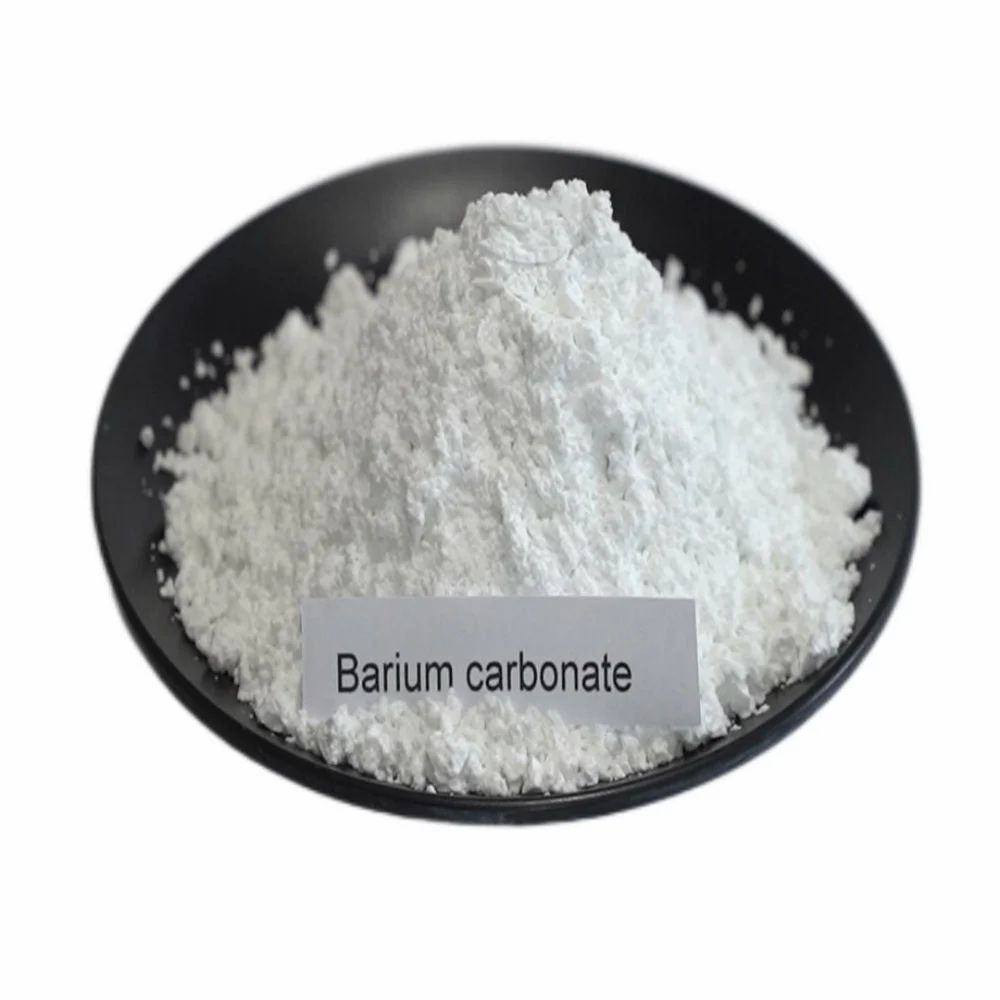Description
Barium Carbonate is an inorganic compound derived from the precipitation of barium hydroxide and carbon dioxide, with urea added to the reaction as a stabilizing agent. Because of how it interacts with certain coloring oxides to produce specialized colors, barium carbonate has applications in the construction material and ceramics industries.
Other names: Witherite, Barium Monocarbonate
Chemical Properties of Barium Carbonate
Barium Carbonate is a white powder that is odorless and tasteless. It is not water-soluble but is soluble in most acids.
✔ CAS#: 513-77-9
✔ Chemical Formula: BaCO3
✔ Material is 99% min.
✔ Residue on >45 micron – 1% max
✔ Packaging 55.115 lb bags
Technical Profile of Barium Carbonate
| Appearance | White, crystalline powder |
| Odor | None |
| Boiling Point | 1,450 °C |
| Solubility in Water | Insoluble |
| Molecular Weight | 197.34 g/mo |
Barium Carbonate Health & Safety Information
| GHS Classification | GHS07 |
| Risk Codes | R22, harmful if swallowed |
| Signal Word | Warning |
| Hazard Statements | H302 |
| Hazard Codes | Xn, Harmful |
Industries That Use Barium Carbonate
✔ Glass
✔ Ceramics
✔ Pigments and Inks
✔ Industrial
✔ Photography
✔ Chemical
Applications of Barium Carbonate
Barium Carbonate has applications across a variety of industries:
✔ Glass manufacturing
Removes sulfate impurities in the chlor alkali process
✔ Ceramics
Acts as a flux in glazes, providing unique colors and matting effects
✔ Construction materials
Prevents efflorescence in bricks, tiles, and pottery
✔ Chemistry
Precursor for other barium compounds and ferrites
✔ Metallurgy
Aids in steel carburizing and metal surface treatments
✔ Other applications
Water purification, rodent control, and as a catalyst in oxidation reactions
Note: Due to leaching concerns, fritted forms of Barium Carbonate are recommended when used in glazes for food-contact surfaces.
Get a Quote for Barium Carbonate
Additional information
| CAS# | 513-77-9 |
|---|---|
| Formula | BaCO3 |





